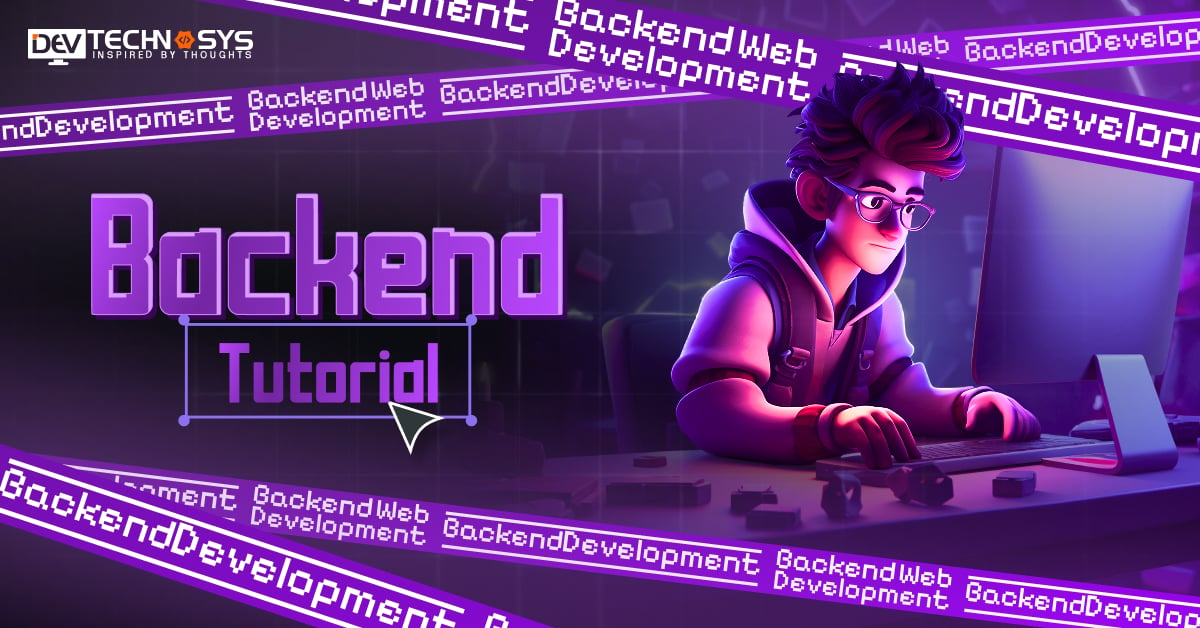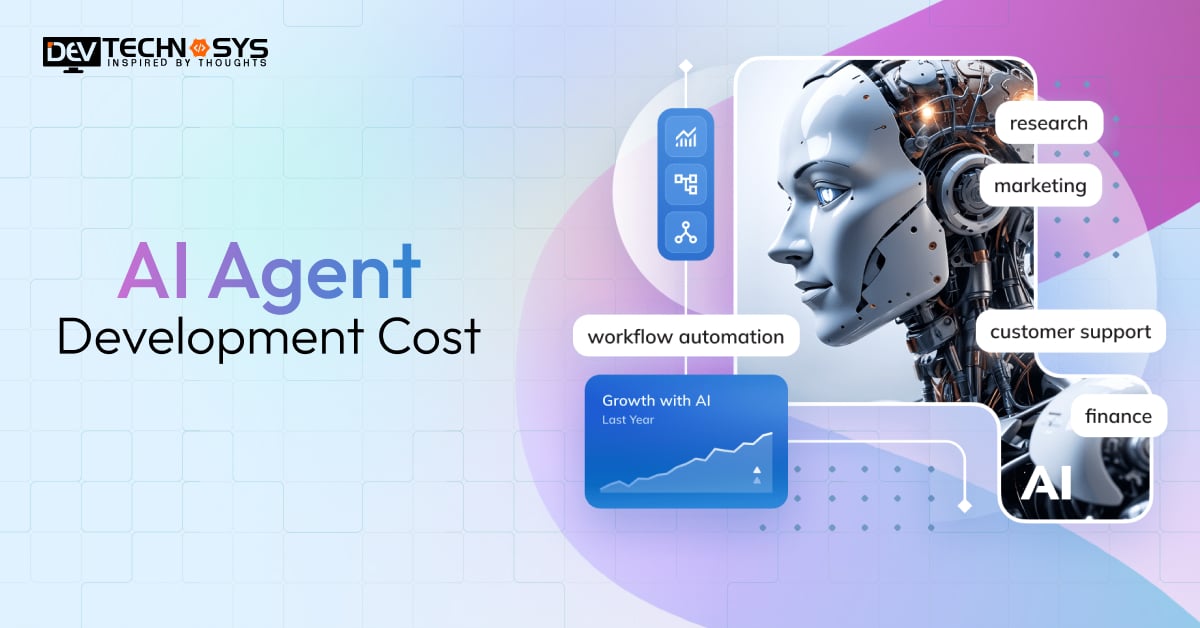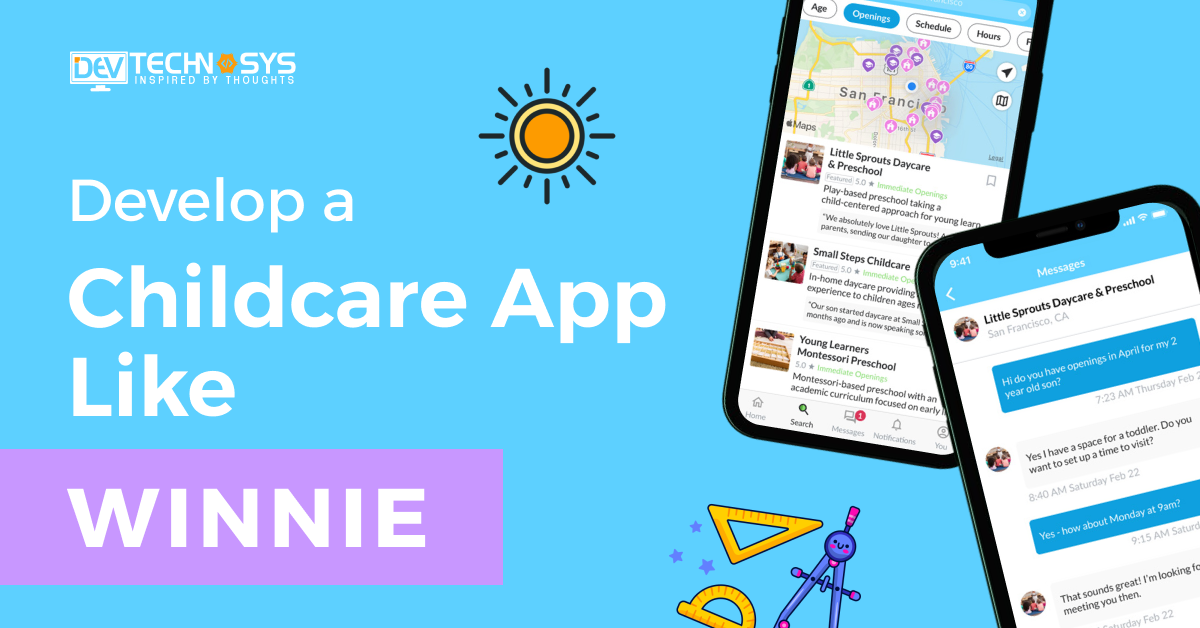Ever wondered what powers your favorite apps behind the scenes? It’s the backend.
The backend is defined as an essential part of an application or website that works behind the scenes. With backend development, developers can seamlessly handle database interaction, logic, and server operations that help to power the app.
For an efficient web and mobile app development, let’s dive into this backend tutorial to find a backend web development guide on languages, tools, and core components of backend development.
What is Backend Development?
Backend development refers to the server-side of an application or website, which is the part that users do not see, but it must function smoothly for everything to work correctly. It helps in handling the server configuration, application architecture, and authentication, which enhances the user interface.
Why is Backend Development Crucial?
Backend development, in simple terms, is an engine that ensures smooth functionality. Want to know about the importance of backend development? Let’s have a look at the points below. This will help you to have a backend development roadmap for efficient development.
1. Ensures Functionality –
Backend development is crucial, as it serves as the logic behind several key features, including data processing, login, and payment.
2. Enables Data Management –
To securely store and retrieve data from databases, backend development is essential. This will enable developers to have seamless REST API development, allowing front-end applications to interact with the database.
3. Supports Scalability –
With backend developers, they can ensure that their app can easily handle larger databases, a greater number of users, and more complex features.
Types of Back-End Programming Languages
Backend developers must follow a step-by-step backend development process to have a backend technologies tutorial. Let’s take a quick look at the table below, which helps you find the back-end programming languages that suit your needs.
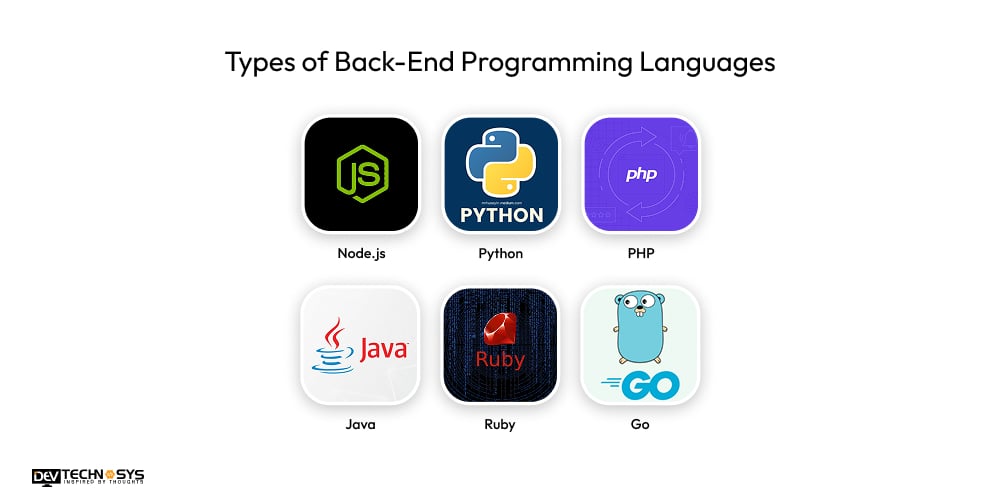
| Language | Best For | Framework Example |
| Node.js | Real-time apps, APIs | Express.js |
| Python | Simplicity, data-heavy apps | Django, Flask |
| PHP | CMS platforms, small businesses | Laravel |
| Java | Enterprise applications | Spring Boot |
| Ruby | Fast MVP development | Ruby on Rails |
| Go | High-performance microservices | Gin |
Core Components of Backend
Let’s explore some essential components and server-side programming that will help you learn more about efficient backend development.
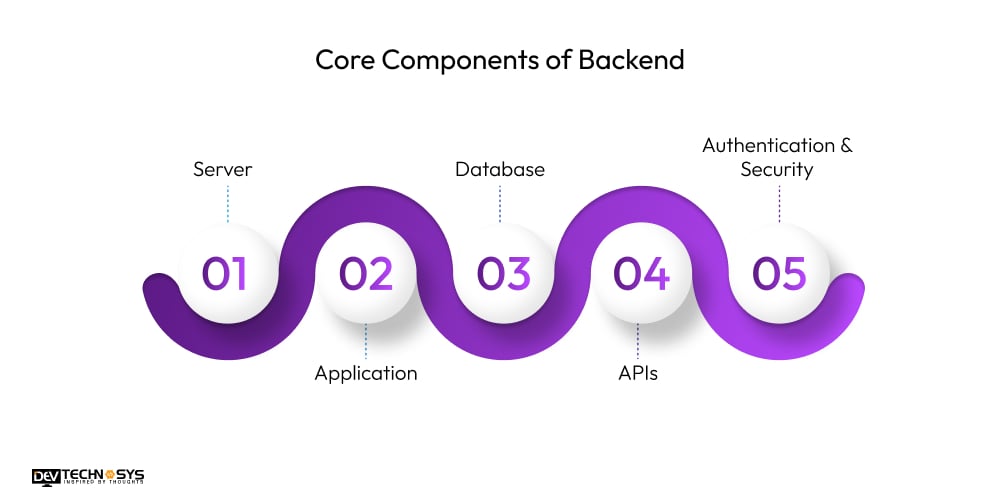
1. Server
This is an essential cloud-based and machine-competent backend, where the application runs. This involves listening to a client’s request and responding accordingly.
2. Application
This component encompasses operations and rules that process user input, perform calculations, and govern how the app presents output.
3. Database
This backend component stores and manages application data. Backend systems interact with SQL or NoSQL to read, create, and delete data.
4. APIs
With this component, developers can ensure seamless communication between the front-end and back-end. This enables data exchange via routes such as GraphQL and REST.
5. Authentication & Security
This is one of the crucial components of the backend through which developers can ensure secure and safe access by managing permissions, user login, and protecting data with the help of validation tools.
Databases in Backend Development
For seamless backend development, let’s find out critical databases that help you to store, manage, retrieve, and efficiently update information.
| Aspect | Relational Database (SQL) | Non-Relational Database (NoSQL) |
| Structure | Table-based (rows and columns) | Document, key-value, graph, or column-based |
| Examples | MySQL, PostgreSQL, SQLite, MS SQL Server | MongoDB, Firebase, Cassandra, Redis |
| Data Schema | Fixed schema, structured data | Dynamic schema, unstructured or semi-structured |
| Best For | Complex queries, relationships, transactions | Scalability, flexibility, and large data volumes |
| Query Language | SQL (Structured Query Language) | Varies (e.g., MongoDB uses BSON/JSON-like) |
| Scalability | Vertical scaling (more power to one server) | Horizontal scaling (spread across servers) |
| Use Cases | Financial systems, ERP, CRM | Real-time apps, IoT, social media platforms |
Backend Testing and Debugging
- Backend testing and debugging are crucial steps in the backend tutorial. With this, developers can assure that their application runs securely, smoothly, and error-free.
- Backend testing primarily focuses on validating server-side logic, API integration, and database integrity.
- With backend debugging, developers can identify and fix crashes, errors, and any form of unexpected behaviour with the help of tools like debuggers and logs.
Interested in a chatbot demo, pricing, or more info? Fill out the form our expert will contact you shortly.
-
Chatbot Demo
-
Cost to Develop an app
-
Industry Report
-
Case Study
Backend vs Frontend Development – What’s the Difference?
For efficient full-stack web development, you need to know about backend logic and architecture. Let’s take a look at the table below to find out a web server setup tutorial to see what makes the backend different from the frontend.
| Aspect | Front-End | Back-End |
| Purpose | User interface and experience (UI/UX) | Server logic, database, and functionality |
| Runs On | Browser (client-side) | Server (server-side) |
| Key Languages | HTML, CSS, JavaScript | Python, PHP, Java, Node.js |
| Main Tools | React, Angular, Vue | Express, Django, Laravel |
| Focus | Design, layout, and responsiveness | Data handling, authentication, APIs |
| Goal | Visual appeal and usability | Functionality, performance, security |
How to become a backend developer?
- To become a skilled backend developer, you must learn backend languages such as Java, Python or Node.js.
- By engaging in the practice of building projects, you can gain a better understanding of security and authentication.
- Follow a roadmap, take courses, and build real-world apps to sharpen skills. This will help you to have real-life experience.
Conclusion
Based on the above analysis of the backend tutorial, we have concluded that backend development is the powerhouse behind every modern app. By learning the step-by-step process of backend development, you can ensure smooth, efficient, and secure work. To experience efficient backend development, you must connect with dedicated developers. This helps you to experience expert support and guidance.
